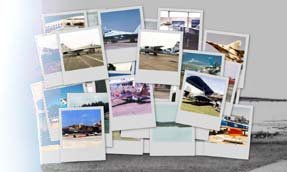

|

Unique
Russian and Soviet Aircraft Photos since 1995!

An Analysis of the Sukhoy-Designed S-37 Berkut
By Hal Clifford
After looking at this kite from the avialable pics on the net, have
come to some conclusions that might be right or wrong, but prob somewhat
close.
-
Engines are prob some variant of a Saturn/Lyulka AL engine. (base on
previous Sukhoi systems)
-
The engines are probably very close in design to the FW-404 turbo-fan
system. (the air intake design and size tends to lead me to this conclusion)
-
Optical Target sys looks very close to the OPES-27 system (look at Sukhoi
SU-27 FLANKER World Air Power Journal Special by Jon Lake 1994)
-
The Radome appears/prob is smaller in length and diameter than SU-27,
prob a new phase array system. (look at Sukhoi SU-27 FLANKER World Air
Power Journal Special by Jon Lake1994)
-
The radome on the rear right side looks like a normal ECM/RHAW system.
(look at Sukhoi SU-27 FLANKER World Air Power Journal Special by Jon Lake1994)
-
The larger and longer radome type pod on the rear left side could be
a rear-ward facing radar system. It has enough diameter plus it is far
enough past the afterburner system so that there should be no or little
interferance. (Do not see the need for two ECM/RHAW systems pods in the
rear of the airframe)
The other radome on the rear right side looks like a normal ECM/RHAW
system. (look at Sukhoi SU-27 FLANKER World Air Power Journal Special by
Jon Lake 1994)
-
Normal type dielectric plates for VHF/UHF antennas to support systems
plus probable data link are on the airframe (look at Sukhoi SU-27 FLANKER
World Air Power Journal Special by Jon Lake 1994)
-
Cannot see really clear on this pic, but on good black and white pics,
there appears to be projections under the fuselage forward and below the
cockpit to be IFF. ( a normal location for IFF systems)
-
AOA appears to be there on the right forward side of the fuselage where
can belongs, although not very clear.
-
Not sure but the black rectangles on top of the fuselage appear to be
bleedoffs for air intake, or could represent intakes for cooling and/or
electrical generators. Would be in the right location for such things.
-
Interestingly, no pylons, but not unusual on test airframes, would guess
you can only get two on each wing of this bird, without various difficulties.
Would guess you could not get over 2000 lbs of armament on each wing.
-
If the engines are right, thrust-to-weight ratio should be about 1:1
or better. Would guess basic weight would be around 30,000 to 40,000 lbs.
-
Would guess that max Mach No. would be around M.2.0 to M 2.1 based on
reported speed of 2200 kmphr as noted on web net write ups:
http://www.brazd.ru/brazds37su47.html.
Design itself would tend to keep the Mach No. in or about that range, but
not likely higher.
-
Doubt if horizontal max alt is any better than 55,000 feet based on
wing area.
-
Stealth, probably as stealthy as a F-16, I do not believe design leads
to any real stealth capability, but stealth capability could be helped
with the right composite materials/paint.
-
Would not expect this airframe as it is presently to go to production.
-
Would also guess that if it did go to production a lot of armament modifications
would have to be made, plus the cost and trailing mantenance load would
probably be high.
Return to S-37 links
Return
to Russian Aircraft Links Portal
Bозврат
на Портал
Return
to Russian Aircraft Resource
Return
to top of page
Return
to Roy's Resources
|





